Where else to best see how salt is made than in a province whose name literally means "place of salt-making".
For two straight mornings I made the pre-dawn trip, together with some of my friends, to a salt field in Dasol, a small town in western Pangasinan - the province best known for its salt. We were staying in Tambobong, a remote fishing village, and had to take a 45-minute bangka ride, tracing the shore, to the mouth of Dasol river where the most of the salt fields are. We almost did not make it on the first day as our boatman was hesitant to leave early. There was no moon and it was pitch black and we risk the danger of running into the numerous fish traps, especially at the mouth of the river.
Bustria salt field
twilightOur destination is a salt field owned by the Bustria family. There were a couple of fields along the river, but this one is one of the largest and its closest to the mouth of the river. Our hosts in Tambobong know the owners as well so there is lesser chance of us being chased out of the property at dawn :).
farm hands
Quite the opposite happened actually: we were welcomed and soon hot coffee was being served, right in the middle of the field while we were frantically shooting. How's that for plain old Pangasinense hospitality!
Salt making
Salt making is a major industry in Dasol, comprising a bulk of the town's income. Although there were no official records, salt making is said to have been practiced in this province even before the colonial times. The technique stayed relatively unchanged for centuries. Sea water is being dried in "salt pools" with brick floors, scraped using a harrow in the afternoon, and collected into baskets. These baskets are left there overnight to allow excess seawater to drip and are then hauled the next morning. Each basket sells for about 40-50 pesos depending on quality. The price more than triples by the time these salt reach the supermarkets.used to flatten the brick floor
Pangasinan salt
Salt production peaks during the summer months, during rainy season the salt farm turns into a shrimp farm. The best salt are produced during the really hot days when the grains are finer and whiter. These are the ones that end up as table salt , or "gourmet salt" for those of really good quality. The coarse and dull-colored salt usually end up being used in producing shrimp/fish sauce/paste or in making dried fish.
Salt hauling
Life stirs as the sun rises. Salt collected the previous day will be hauled into small huts - sort of granaries but instead of grains, salt is stored.
Its literally back breaking work. Each basket can easily weigh up to 30 kilos, more if the salt is finer, which is usually during the summer months when the sun's heat is really intense.
The collected salt is then piled unto huge mounds inside huts, waiting for whole sale buyers.

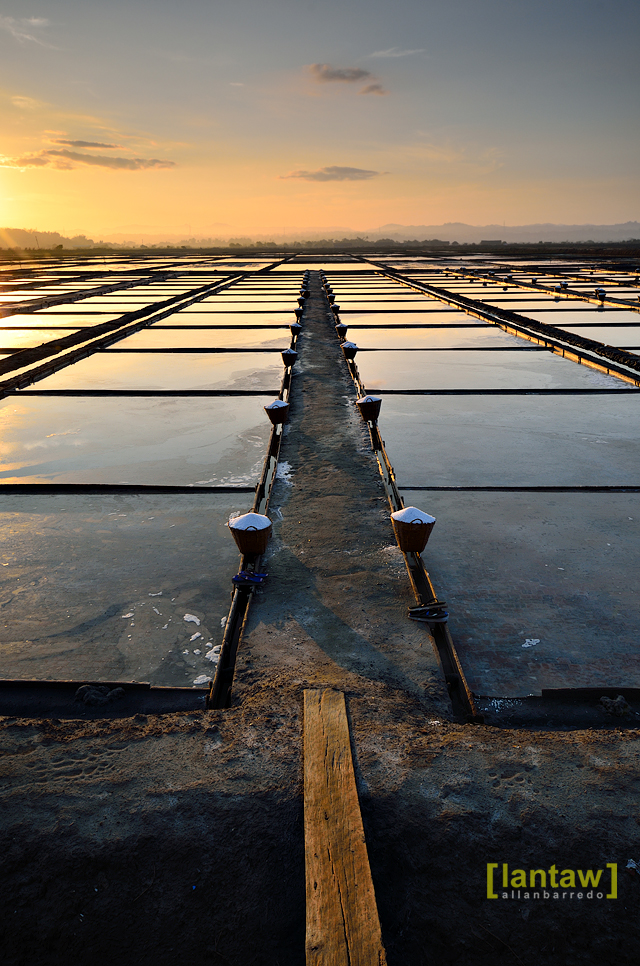
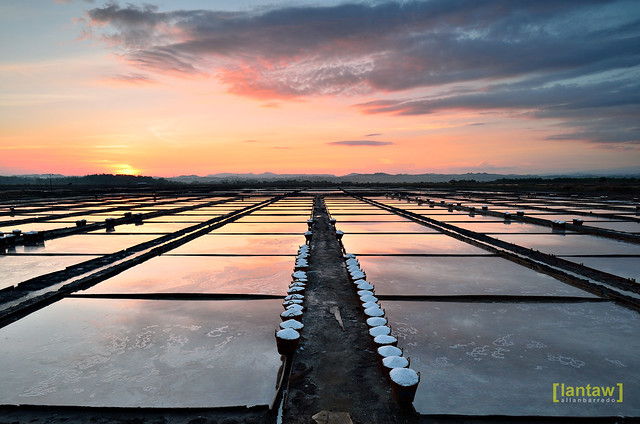


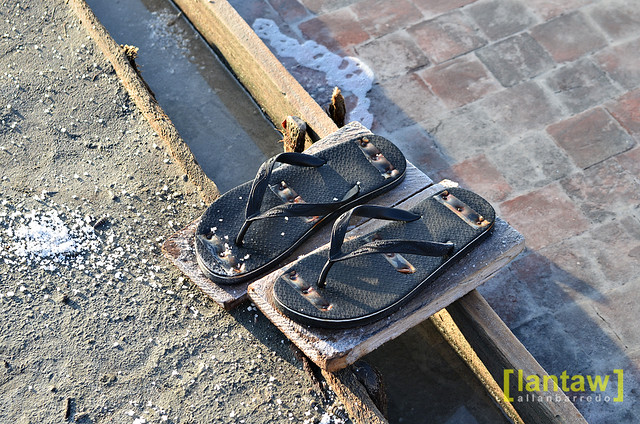
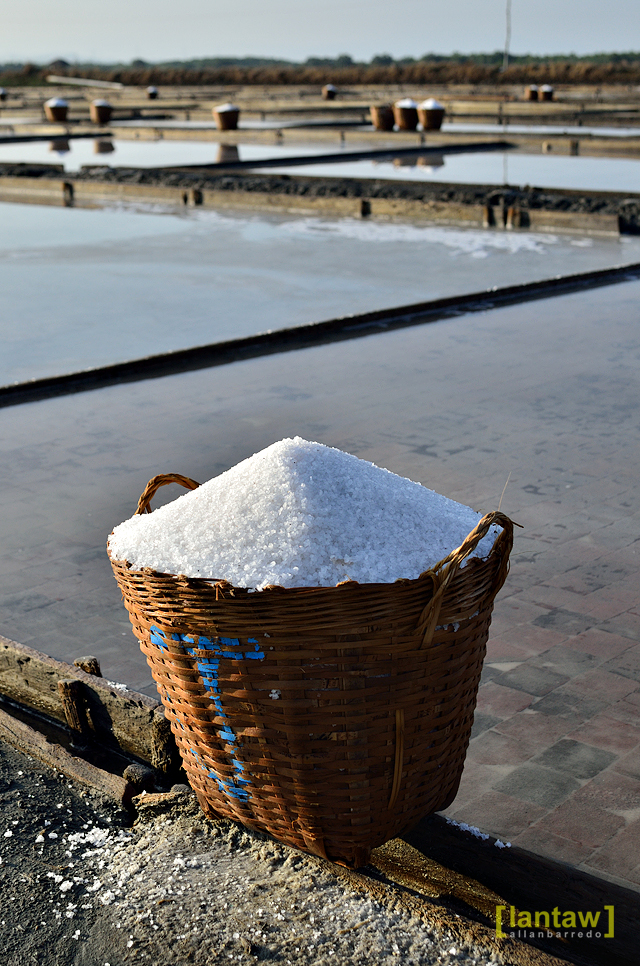
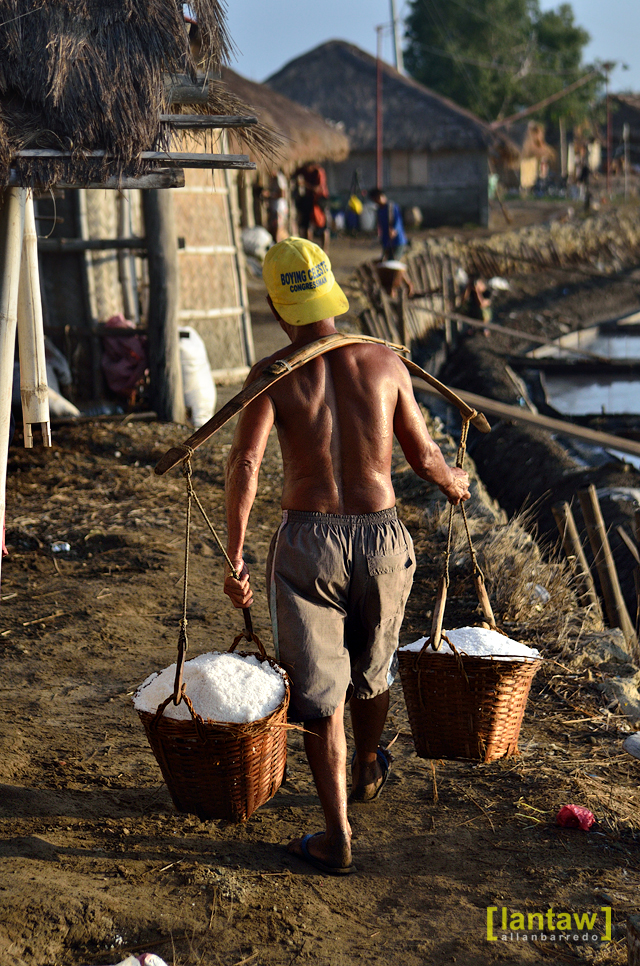



6 comments:
This is the Philippines. Great work.
Jim K.
Thanks Jim!
I tried to see the "irasan" in cavite a couple of months ago, but it was mostly shrimp farms at that time
Sir, is there any resort or lodging house nearby where we can stay overnight?Im planning to shoot here kc with friends.
Most stay in Tambobong or Osmeña (e.g. Villa Balinmanok)
Thanks for the pics. Our family is from Hermosa and we visit often so I get the chance to witness this backbreaking work firsthand. You've really posted a bunch of great pictures and information from all over the Philippines. Thanks again. Cheers!
Post a Comment